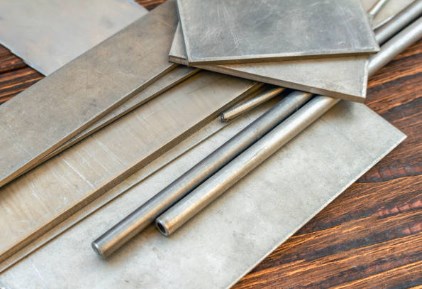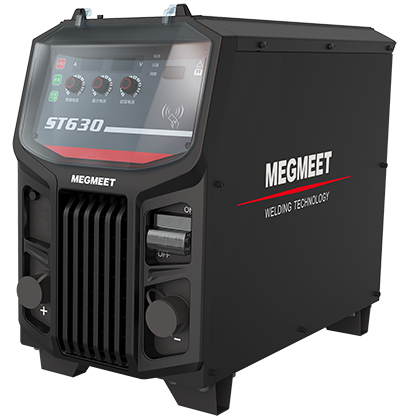Stick welding, also known as Shielded Metal Arc Welding (SMAW), is one of the most versatile and widely used welding techniques in industries worldwide. Whether you're working on thin sheets or thick metal plates, mastering stick welding requires skill, precision, and a deep understanding of the materials involved. In this comprehensive guide, we’ll explore the best practices for stick welding different metal thicknesses, ensuring you achieve professional-quality welds every time.

I. The Core Principles of Stick Welding
Before diving into the specifics of welding different thicknesses, it’s essential to understand the fundamental principles of stick welding. This includes selecting the right stick welding machine for sale, understanding electrode selection, and controlling heat input.
Understanding Metal Thickness: Metal thickness plays a crucial role in determining the approach and settings for stick welding. Thinner metals require less heat, while thicker metals need higher amperage and preheating to avoid cracking.
Adapting to Different Thicknesses: Welders must adjust their techniques, amperage settings, and electrode size based on the metal thickness. This ensures proper penetration and prevents issues like burn-through or lack of fusion.
II. Stick Welding Different Thicknesses: Techniques and Tips
1) Welding Thin Metals (Less than 1/4 inch thick)
Welding thin metals demands precision and control to avoid burn-through. Here’s how to do it right:
Lower Amperage Settings: Use a lower amperage setting to prevent excessive heat input. For thin sheets, start with a lower range and adjust as needed.
Smaller Electrodes: Opt for smaller diameter electrodes (e.g., 1/8 inch or 3/32 inch) to maintain control and avoid melting through the metal.
Tack Welding: Before the final welding, tack weld thin sheets to hold them in place. This minimizes warping and ensures proper alignment.
Cooling: Allow the metal to cool between passes to prevent distortion.
Pro Tip: Always clean the metal surface before welding to remove dirt, oil, or rust, which can weaken the weld.
2) Welding Medium-Thickness Metals (1/4 inch to 1/2 inch thick)
Medium-thickness metals are common in many industrial and construction projects. Here’s how to handle them effectively:
Balanced Settings: Use moderate amperage settings and slightly larger electrodes (e.g., 5/32 inch or 3/16 inch) for better penetration.
Joint Preparation: Ensure proper joint preparation by cleaning and beveling the edges. This ensures a strong, deep weld.
Steady Movement: Maintain a steady welding speed to avoid overheating or lack of fusion.
Multiple Passes: For thicker materials, use multiple passes to build up the weld gradually.
3) Welding Thick Metals (Over 1/2 inch thick)
Welding thick metals requires more power and precision. Here’s how to achieve professional results:
Higher Amperage: Increase the amperage settings and use larger electrodes (e.g., 1/4 inch or 5/16 inch) for deeper penetration.
Preheating: Preheat the metal to reduce thermal stress and prevent cracking. This is especially important for metals like steel or stainless steel.
Weaving Technique: Use a weaving motion to distribute heat evenly and ensure full fusion.
Cooling: Allow the metal to cool between passes to avoid residual stresses.
Pro Tip: Always inspect the weld after cooling to ensure there are no defects or lack of penetration.
III. How to Choose the Right Stick Welding Machine for Sale
Selecting the right stick welding machine is crucial for achieving high-quality welds. Here are some factors to consider:
Amperage Range: Look for a machine with an adjustable amperage range to handle different metal thicknesses.
Duty Cycle: A higher duty cycle ensures longer welding sessions without overheating.
Electrode Compatibility: Ensure the machine supports the electrode sizes you commonly use.
Portability: If you work on-site, consider a portable stick welding machine for convenience.
For the best stick welding machine price, visit Megmeet Welding Technology and explore our high-quality options.

IV. Frequently Asked Questions (FAQs)
Q1. What are the best electrodes for stick welding different thicknesses?
The choice of electrodes depends on the metal thickness and type. For thin metals, use smaller electrodes (1/8 inch or 3/32 inch), while thicker metals require larger electrodes (1/4 inch or 5/16 inch).
Q2. How do I prevent burn-through when welding thin metals?
Use lower amperage settings, smaller electrodes, and tack welding to avoid burn-through. Allow the metal to cool between passes.
Q3. Do I need to preheat thick metals before stick welding?
Yes, preheating thick metals reduces thermal stress and prevents cracking. The ideal preheating temperature depends on the type of metal.
Q4. Where can I find a reliable stick welding machine for sale?
For high-quality stick welding machines at competitive prices, visit Megmeet Welding Technology.
Conclusion
Stick welding is a versatile technique that requires a deep understanding of metal thickness, amperage settings, and electrode selection. By mastering these principles and adapting your techniques, you can achieve flawless welds on any metal thickness. Whether you're working on thin sheets or thick plates, the right techniques and tools will make all the difference.
For the best stick welding machine price and expert guidance, trust Megmeet Welding Technology. Contact us today to elevate your welding projects to the next level.
Related articles:
1. What is the Difference Between Stick Welding and MIG Welding?
2. Pros and Cons of Stick Welding and MIG Welding
3. How to Improve Your Stick Welding Technique?
4. AC Vs DC Stick Welding – Which One Is The Best & Why?
5. All You Need To Know About Overhead Stick Welding





